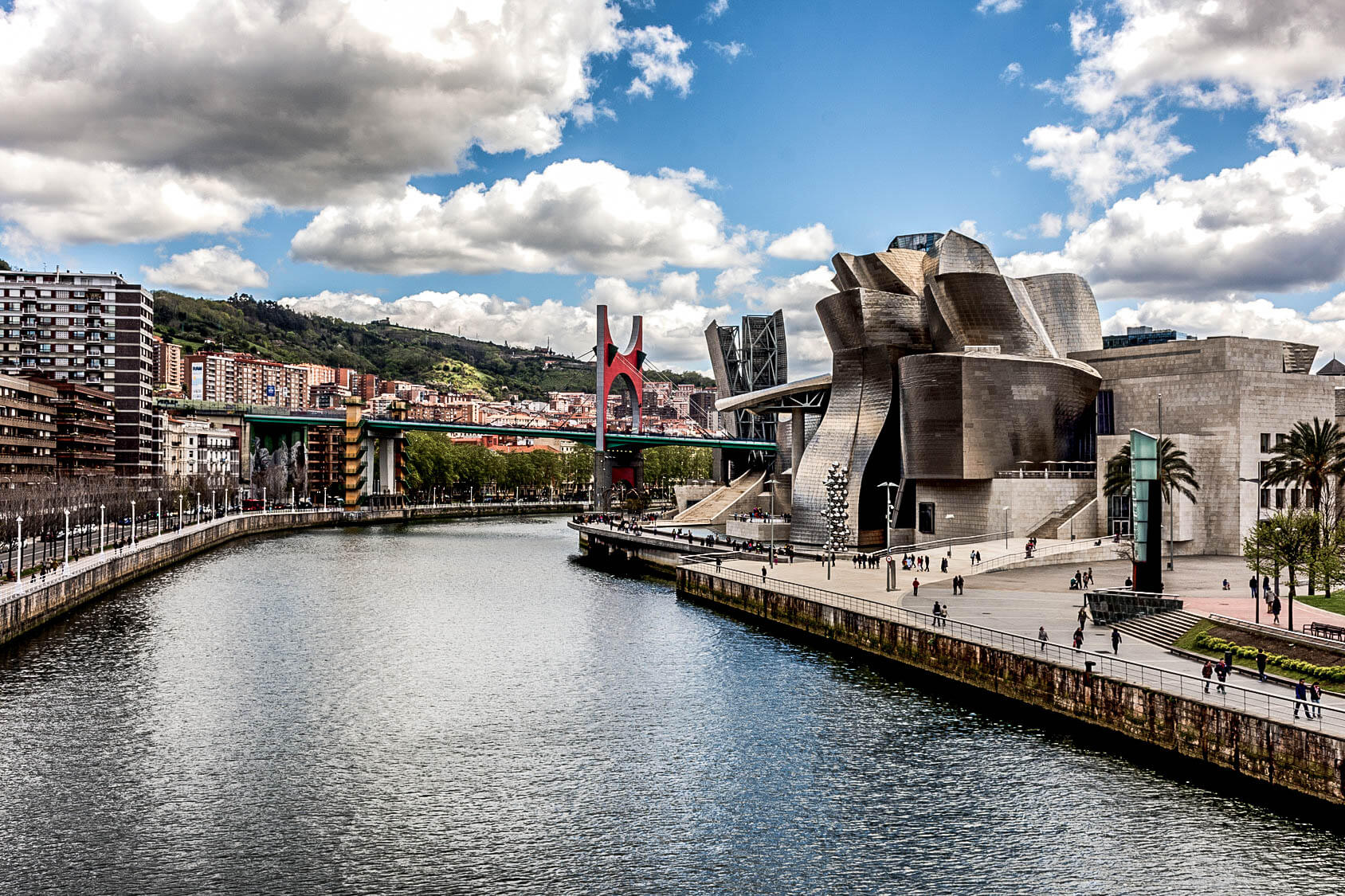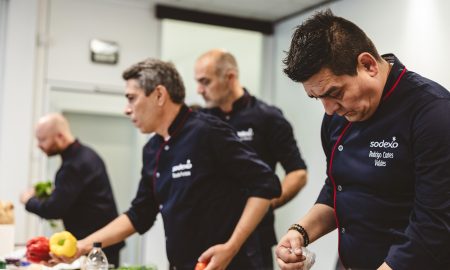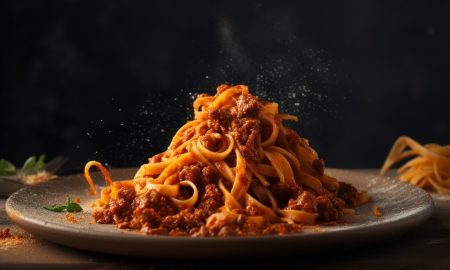Heaven on earth
This Spanish province, with its vibrant capital of Bilbao, is one of three in the country’s autonomous Basque region. Here, hospitality and gastronomy aren’t just part of life, they’re a passion. The coastal region offers motivated expats an exciting gastronomic adventure situated between the mountains and the sea, full of opportunities to learn from luminaries of the culinary world.
Is heaven on earth really a thing? Is there a true paradise out there for people who live and breathe gastronomy, people who are never happier than when they’re discovering new, super high-quality products, or maybe restaurants preparing them in ways that make their hearts sing?
Yep. It really exists. It’s in the northeast of Spain, with the Sierra Cantabria looming in the distance and the wild Atlantic waves crashing along the Basque coastline. Right there—where the ocean stops, just before the mountains—lies Bizkaia. (Incidentally, just on the other side of the mountains is Rioja, in case you’ve ever dreamt of working for a top winery like Remelluri or Lopez de Herédia.) The region’s capital, Bilbao, was a fairly unattractive industrial town in the 1980s, but has since flourished into a cultural and gastronomic hot spot of a metropolis.
Its transformation began in 1997, when the Guggenheim Museum opened and the city decided it wanted to be more than just a hub of industry… and/or to show the world that it’s always been more than that. Nowhere on the planet are food and hospitality as treasured as they are here, in Basque country. Basques themselves will tell you that, and by the time you’ve made your first rounds through the pintxo bars, you’ll be agreeing with them. At first, you see the bar counters on every corner groaning under the weight of these mountains of snacks and appetizers—like guindilla (a popular Basque pepper variety), bacalao (cod), and dry-cured ham—and you wonder who on Earth they think is going to eat all this food. After a while, you realize that leftovers aren’t a problem around here. These are top-quality products prepared in simple ways, so striking in their purity and quality that once you’ve had one pintxo, you can’t help having another… and another. Good food is culture. And in Basque country, it’s a lot more than that.
Bizkaia: Where food is holy
Pretty soon, you start to understand how this area has come to have more Michelin-starred restaurants per square mile than anywhere else in the world. They really do have it pretty good out here, these Basque folks. They’ve got fresh fish and seafood from the cold Atlantic, and the flora and fauna around them flourishes in all the rain. And the mild winters keep the region’s famous Latxa sheep, whose milk is used to make ideazabal cheese, cozy and content all year long. Throw another bacalao on the grill whole (they’re a house special at REKONDO, one of the best-known restaurants in the area) and you’ll officially never want to leave.
If you really want to learn to grill—like, well enough to end up number 10 on the San Pellegrino 50 Best Restaurants list—Etxebarri is the place for you. Chef Victor Arguinzoniz brings rustic, regional, and grilled specialties together with such refined artistry that even New York’s snootiest city slickers leave the table licking their fingers.
The landscape, the scenery, and the people here all seem to have a kind of magic about them, and Basque hospitality in general has a flair all its own. The Basques themselves are rooted in their culture, extremely proud of it, but they still welcome newcomers with open arms… or wrap a traditional Basque scarf around them, as the case may be. And then there you are, noshing on txuleta (giant steaks) and drinking sidra (hard cider, which you draw yourself from oak casks as tall as the ceiling).
Opposites attract here, and the result is irresistibly appealing. Basque country is rusticality in its purest form—stone walls, open grill pits, men’s cooking clubs, sociedades that only became open to women in the 1970s—shoulder-to-shoulder with some of the best Michelin-starred restaurants in the world. Basques are also conscientious and efficient in their use of natural resources. People here are well aware how precious the treasures of the Bay of Biscay are, and they take pains to protect them.
In June 2018, the 50 Best Restaurants committee voted the three-Michelin-starred gourmet temple Azurmendi the world’s most sustainable restaurant. Executive Chef Eneko Atxa has always believed that harmony is priority number one in every respect: harmony among the staff, whose talents are fostered and respected; harmony with suppliers, who provide top-quality ingredients with an eye toward sustainability; and of course, harmony with guests, who find that Azurmendi, a glass cube surrounded by vineyards, is the epitome of friendly, relaxed hospitality. Nothing about this place is the stiff, uninspired haute cuisine of old, which seems to be gradually disappearing from the landscape in other regions as well.
Sieh dir diesen Beitrag auf Instagram an
The triad of culture, art, and enjoyment requires no tuxedos and ties, no cocktail dresses or starched linens. All it really needs are exceptional products and culinary skill. You get the feeling that people here in Basque country have always understood that, and word is just starting to get out to the rest of the world about this Gallic village of gastronomy that’s finally opened its gates and is happily sharing its top-secret drink recipes with anyone who cares to ask.
How do you earn a Michelin star at a museum restaurant? Take a few cues from Josean Alija at the Guggenheim Museum. His path through the kitchen takes him past more than 30 types of stock every day, and unlike at other restaurants, Josean Alija makes them the star of the show. The decor is simple pale wood. That’s it. The point is that there’s nothing distracting you from what’s on your plate. Or in your glass, for that matter. The vintners in Bizkaia produce a fresh, acidic white wine called txakoli that puts just the right twist on your evening snack of ham, idiezabal, and guindilla peppers. Maybe sixty miles away, Spain’s most famous wine region, Rioja, is busily exporting spectacular wines throughout the world. It’s also a big draw for hotel and architectural aficionados, who don’t want to miss the Ysio vineyard, whose wavelike forms draw upon the Sierra Cantabria for inspiration, or star architect Frank Gehry’s silvery-violet ode to wine at the Marques de Riscal vineyard. And as you might have guessed, this luxury hotel is home to yet another Michelin-starred restaurant. Of course, right? That’s Basque country for you.
Currency: EUR
Studio apartment downtown: €750 per month
Population of Bilbao: 345,150
Primary religion: Roman Catholic
Languages spoken: Spanish, Basque
Career opportunities
The center of it all: Top restaurants are smattered throughout this section of the Atlantic coast, redefining gastronomy day after day; wine freaks and aspiring hoteliers have Rioja, Spain’s most famous wine region, just a stone’s throw away.
Season
Culture knows no season: Food is front and center in Basque culture. Foodies make the pilgrimage to the area all year round, though visitor numbers are highest in summer
Finding an apartment
Worth the pain: Ah, apartment hunting… the one downside to the region. The Basque country is one of the richest parts of Spain, and you can tell from the apartment prices.
Mentality
Hearts of gold: Basques are like Spain’s answer to Vikings: reserved at first, but once the ice is broken, there’s no stopping them.















